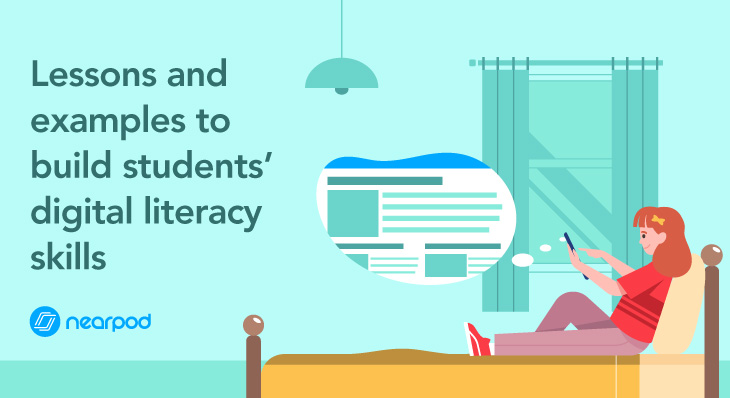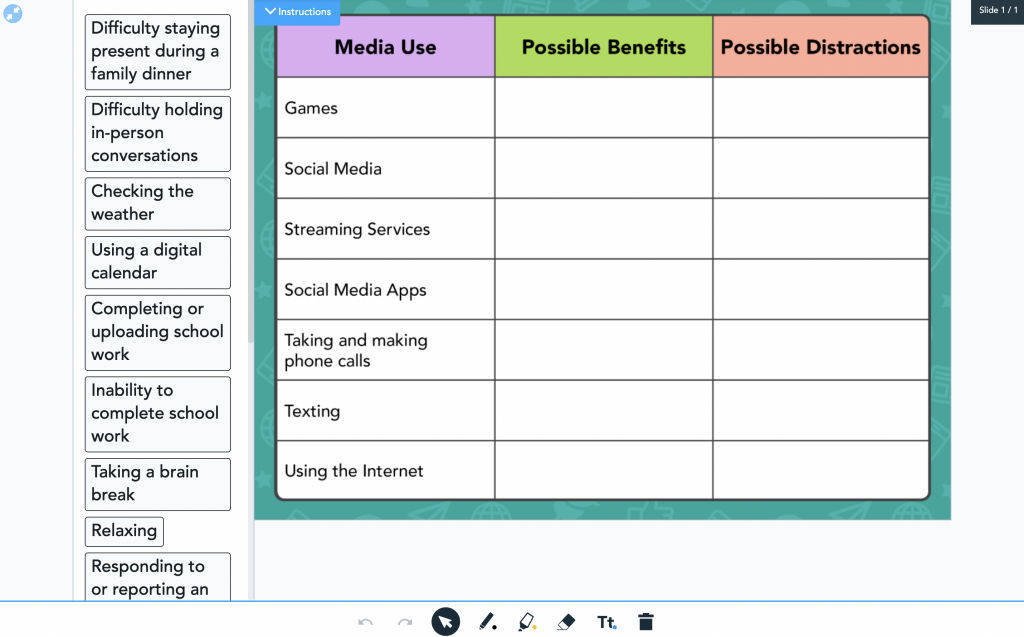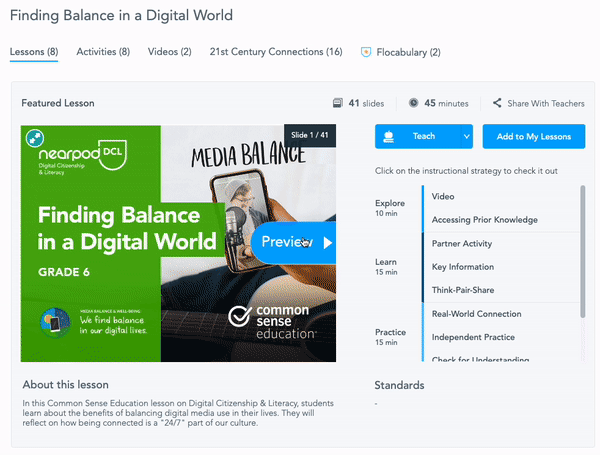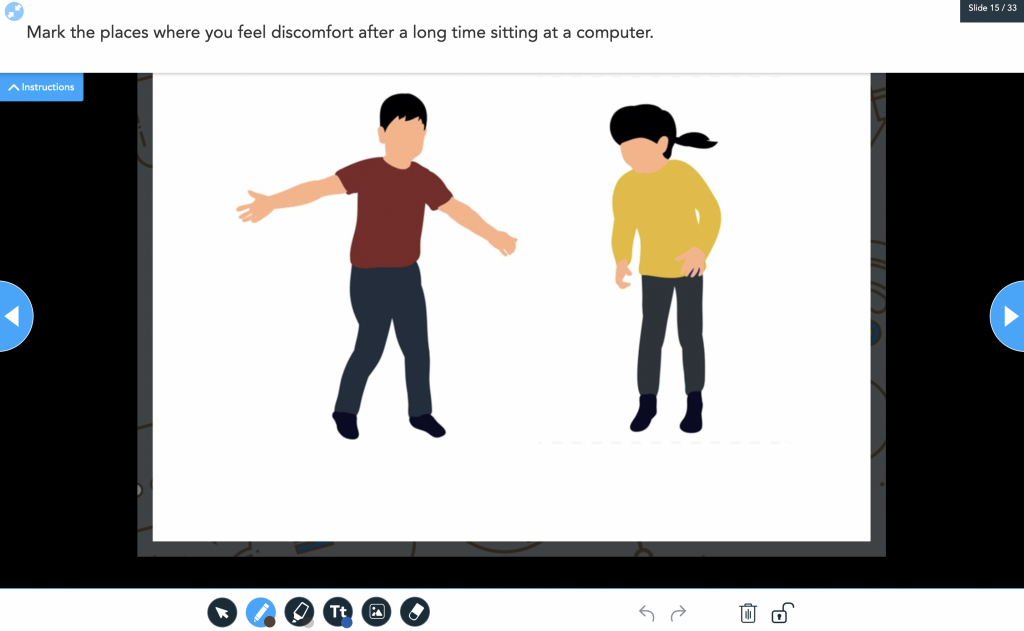
Lessons and examples to build students’ digital literacy skills
Advancements in technology have radically changed what we’re capable of doing with the supercomputers we carry in our pockets. Technology can dramatically amplify your voice and reach beyond your local community. This is why building digital literacy skills for students is important.
Why is digital literacy important?
We can access infinite amounts of information across the internet landscape, speak with people thousands of miles away, and create social ecosystems that in some ways come to replace the traditional ones we think of. Through digital literacy examples, students can learn how to safely and effectively use technology. These skills are often prioritized during Digital Citizenship Week, but they should be implemented year-round.
This is only the beginning, and all of us can recognize the role that these devices and technology will play in the future. It’s exciting (and important) to consider what’s possible. Therefore, logic follows that we should teach young people how to use these devices to ensure sure they have the tools to thrive in 21st-century society. We see this happening today. Parents are more and more willing to give their kids the phone or tablet they desire at a younger age. Schools are desperate to get tablets and computers into classrooms, sometimes without the knowledge of what to even do with them.
We should teach young people how to use these devices to make sure they will have the tools to thrive in 21st-century society. - @NearpodAdamClick To TweetWhat is digital literacy in education?
The American Library Association (ALA) defines digital literacy as “the ability to use information and communication technologies to find, evaluate, create, and communicate information, requiring both cognitive and technical skills.”
We’ve given kids across the country access to devices and technology without teaching them how to use them safely, responsibly, and effectively. The same incredible capacity of devices to make our lives easier and amplify our voices can also have pitfalls. With the click of a button, one mistake can be accidentally broadcasted to your entire social circle and strangers all over the world in a matter of seconds. Your inability to create or understand a spreadsheet can be the difference between a job offer and denial. We often get our news online, but one Stanford study demonstrated young people dramatically overestimated their ability to evaluate the credibility of information online.
Teenage hubris is nothing new, but in the digital age teenage mistakes stay with you. We had to invent cars before recognizing the need for driver’s ed and seatbelts. Would you give a 16-year-old the keys without them today? We have recognized the costs and consequences of not educating students about digital citizenship and literacy and it is our shared responsibility to develop a curriculum that can teach them effectively. A society that can resist fake news, navigate productivity software, understand the way the internet runs, and in general be empowered by technology as opposed to shackled by it depends on our ability to do so.
We had to invent cars before recognizing the need for drivers’ ed and seatbelts. Would you give a 16-year-old the keys without them today? - @NearpodAdamClick To TweetLessons and examples to build students’ digital literacy skills
Nearpod’s 21st Century Readiness Program
Nearpod’s 21st Century Readiness Program provides educators with tools and curriculum resources, so they can be confident their students across all grade levels are capable of using all these powerful devices safely, ethically, and effectively, can process the emotions that technology elicits, and understand the opportunities and consequences technology has on their future. Partnered with Common Sense Education, the program contains engaging learning experiences by leveraging Nearpod’s features to make lessons interactive and collaborative. Teachers don’t need to be experts in digital citizenship, social and emotional learning, or college and career readiness to facilitate them.
Free digital literacy lessons
The digital citizenship portion of the program is broken down into four series that address unique aspects of digital citizenship: Digital Citizenship, Media Literacy, Technology Applications, and Coding. Each series includes pre and post-assessments, behaviorally-driven objectives with respective activities to match, PBL Design challenges, and SEL skills that are connected to each topic.
Here are the topics that we cover and free lessons to get you started:
Digital Citizenship: How to safely, ethically, and effectively navigate the internet/devices
- In this K-2 Digital Citizenship and Technology Drag & Drop activity, students will identify the rules for being a good digital citizen.

Media literacy: How to read the news/social media with a critical lens, decipher fake news, manage your media diet, and evaluate the accuracy, perspective, credibility, and relevance of informational sources.
- In this 6-8 Digital Citizenship and Technology Drag & Drop activity, students will demonstrate their understanding of good media habits by reflecting on the benefits and distractions of media use.
Social Media: Encourage awareness and reflectiveness of the impact that students’ interaction with social media has and create a deeper understanding of how these platforms work.
- In this video from Common Sense Education, students listen to teens reflect on how they curate their social media lives and think about the self they’re presenting on social media.
Technology Applications: How to navigate computers, learn tech skills applied to schools, and speak the language of technology
- In this Nearpod Digital Citizenship and Literacy lesson, students identify healthy habits when using a computer. Students learn to model and apply good posture when using a computer.
Coding: Teach students of any age how to code and understand algorithms
- In this STEM lesson partnered with Code Monkey, students will start to learn a programming language. Your students will define coding and computer programming.
You can use these resources to teach your students digital literacy skills. The 21st Century Readiness Program takes abstract concepts and grounds them in real-world applications, making concepts less foreign and pushing students to see themselves in all topics. As we prepare young people for the future, it is our shared responsibility to make sure we are teaching students to be authentically digital and media literate. Nearpod’s 21st Century Readiness Program does just that!
New to Nearpod? Sign up for free here to access these lessons!

Nearpod’s award-winning platform is used by thousands of schools around the globe, transforming classroom engagement.










